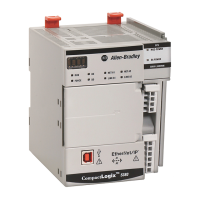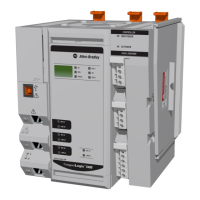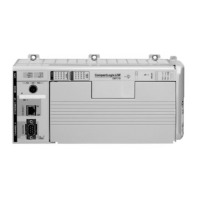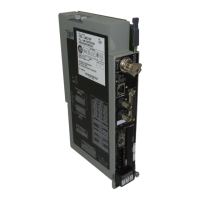Rockwell Automation Publication 1769-UM021G-EN-P - October 2015 273
Develop Applications Chapter 10
Access Extended Properties in Logic
You can access limits that are defined on tags by using the .@Min and .@Max
syntax:
• You cannot write to extended properties values in logic.
• To use extended tag properties in an Add-On Instruction, you must pass
them in as input operands to the Add-On Instruction.
• Alias tags that have extended properties cannot access the extended
properties in logic.
• Limits can be configured for input and output parameters in Add-On
Instructions. However, limits cannot be defined on an InOut parameter of
an Add-On Instruction.
• Limits cannot be accessed inside Add-On Instruction logic. Limits are for
use only by HMI applications.
If an array tag is using indirect addressing to access limits in logic, the following
conditions apply:
• If the array tag has limits that are configured, the extended properties are
applied to any array element that does not explicitly have that particular
extended property configured. For example, if the array tag MyArray has
Max configured to 100, any element of the array that does not have Max
configured inherits the value of 100 when being used in logic. However, it
is not visible to you that the value inherited from MyArray is configured in
the tag properties.
• At least one array element must have a limit that is configured for
indirectly referenced array logic to verify. For example, if
MyArray[x].@Max is being used in logic, at least one array element of
MyArray[] must have Max extended property that is configured if
MyArray has not configured Max.
• Under the following circumstances a data type default value is used:
– Array is accessed programmatically with indirect reference.
– Array tag does not have the extended property configured.
– A member of an array does not have the extended property configured.
For example, for an array of SINT type, when max limit is called in logic
for a member, use the value of 127.
If an array element is directly accessed, the element has to have the extended
property defined. If not, verification fails.

